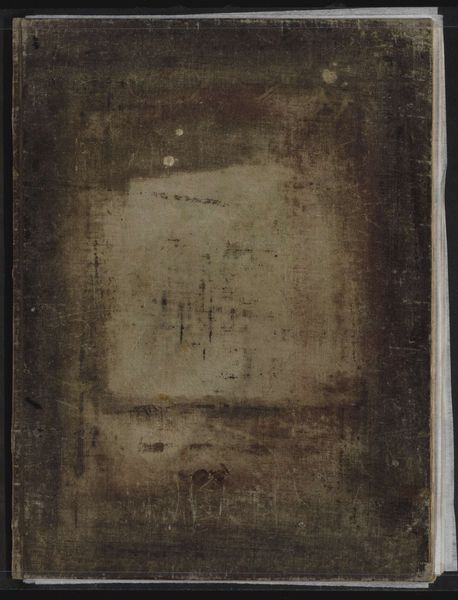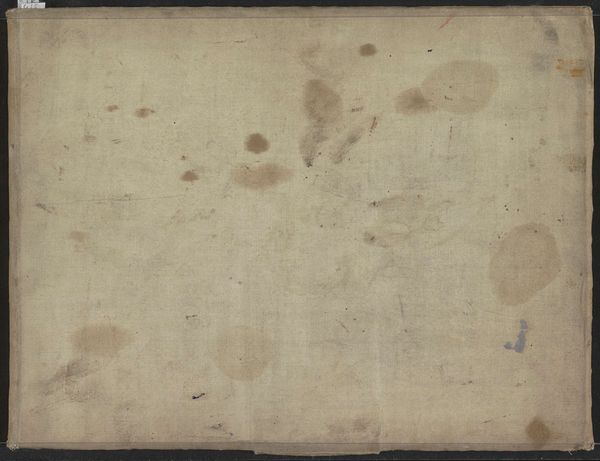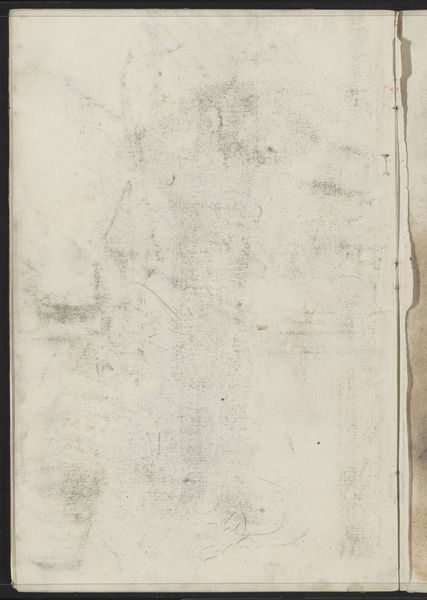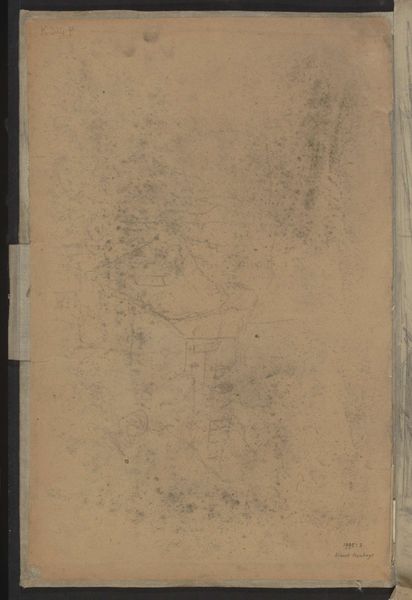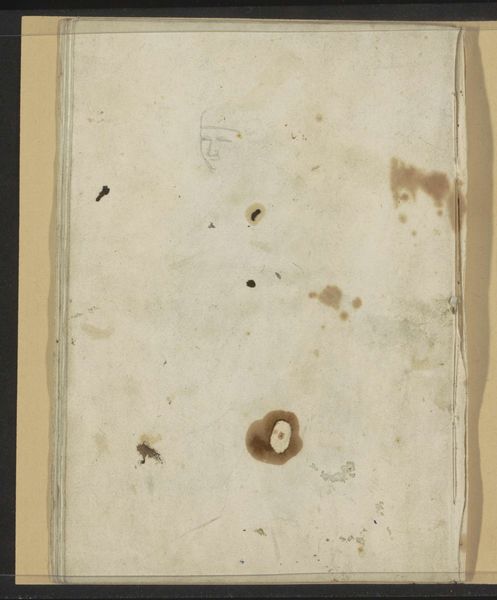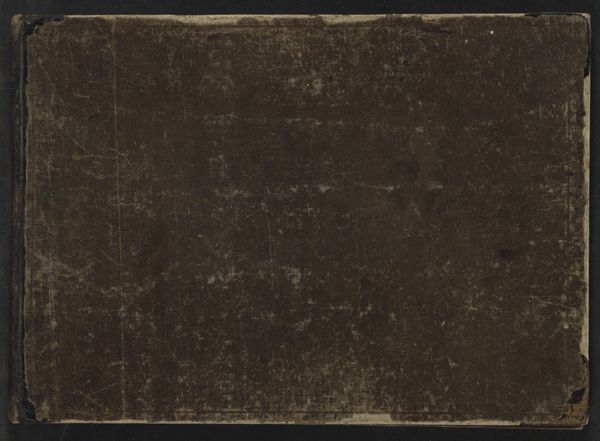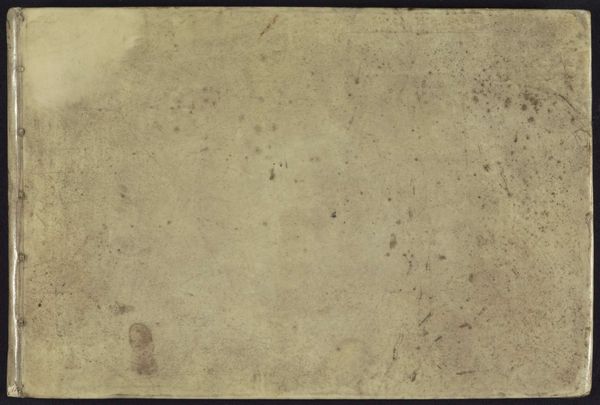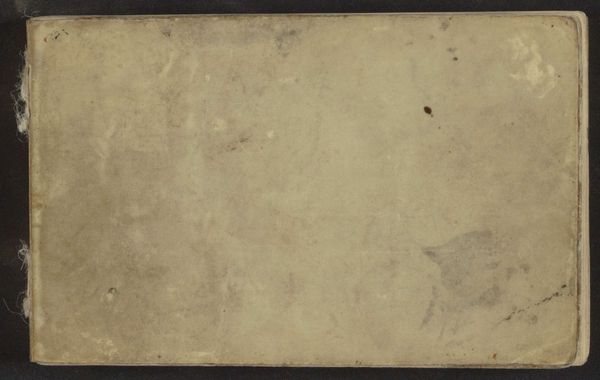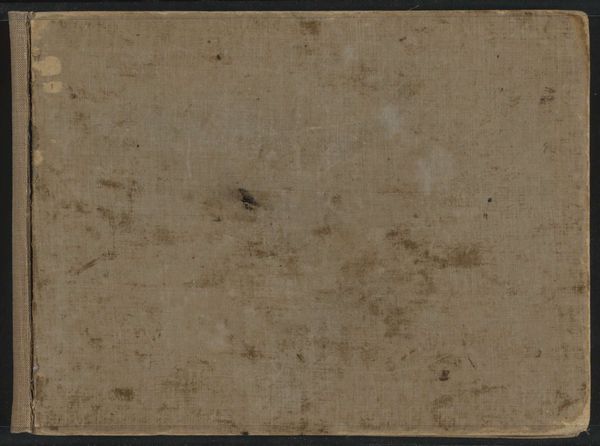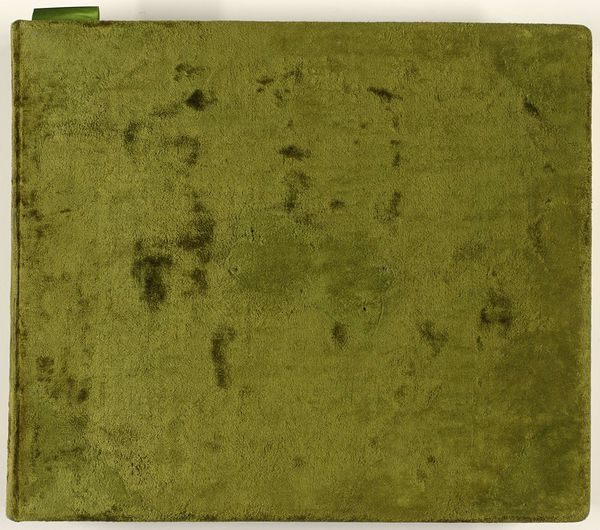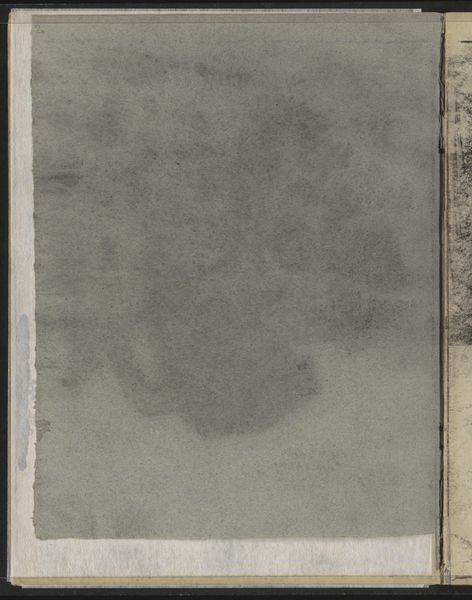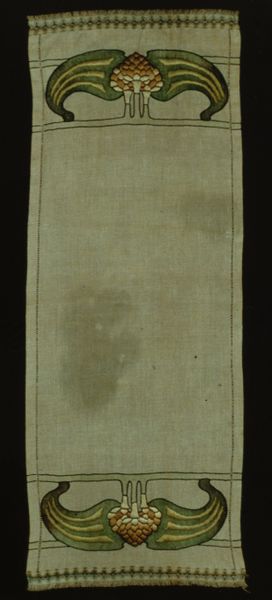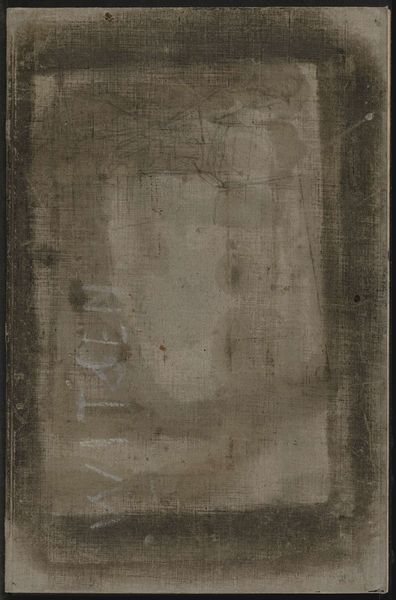
Schetsboek met 42 bladen vervaardigd rond de Ewijkshoeve c. 1884 - 1887
0:00
0:00
drawing, paper, watercolor
#
drawing
#
water colours
#
impressionism
#
landscape
#
paper
#
watercolor
#
watercolor
Dimensions: height 512 mm, width 321 mm, thickness 19 mm, width 640 mm
Copyright: Rijks Museum: Open Domain
Curator: We're looking at a sketchbook containing 42 leaves created around the Ewijkshoeve by Willem Witsen, dated roughly between 1884 and 1887. Editor: My initial reaction is a sense of faded history and fragility. It's a beautifully imperfect object; those water stains on the cover speak volumes. Curator: Absolutely. This sketchbook gives us an intimate look into Witsen’s artistic process. The landscapes he captured using watercolor on paper reflect the influence of Impressionism, a style becoming more and more prevalent during that time. This focus on capturing the fleeting moment in nature marked a shift in artistic representation. Editor: It makes me think about accessibility to land, who owned it, and who had the leisure to observe it in this way. The rural setting, especially during rapid industrialization, presents a stark contrast. Is he romanticizing the countryside, or engaging with it in a more complex manner? Curator: That's an insightful point. There’s certainly an element of romanticism, but also a keen interest in the changing landscape and the impact of modernization. Witsen was deeply embedded in Amsterdam’s artistic circles; we must view the sketchbook as more than simple rural sketches. Editor: Yes, situating Witsen within that cultural milieu is key. What role did these images play in the broader narrative of Dutch national identity, considering the socio-political undercurrents of the era? Did he intentionally leave the sketchbook like that or are they marks over time from many encounters with weather conditions, or did Witsen even decide how the sketches are binded in the book, maybe we're misinterpreting it as one art piece instead of multiple pages with individual stories to tell? Curator: Good point. Museums shape how people see art, binding and naming them for various public perceptions. It may affect and blind our ability to understand their full artistic impact. Editor: I will agree to that. Thank you. Curator: Likewise. Thinking about the act of creation—wandering, observing, and recording—this is such an exciting thing to analyse from all different angles.
Comments
No comments
Be the first to comment and join the conversation on the ultimate creative platform.
